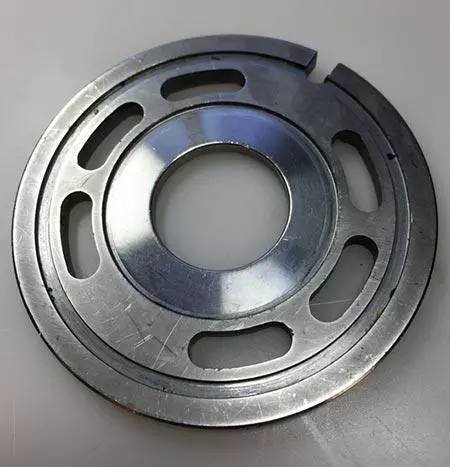Surface Finishing Valves
Surface finishing of valves is an essential step in valve manufacturing that plays a critical role in ensuring proper sealing and optimal performance. Lapping and polishing are the best techniques for achieving the desired results, as they offer precision, consistency, and the ability to remove imperfections and create a smooth surface finish. By investing in lapping and polishing techniques, manufacturers can improve the durability, longevity, and performance of their valves, while also improving their aesthetics and overall quality.
Importance of Surface Finishing Valves
Valves are critical components in a wide range of industrial applications, including oil and gas, chemical processing, water treatment, and many others. Proper sealing of valves is essential to prevent leaks that can lead to loss of product, environmental hazards, or even equipment failure.
Surface finishing valves play a critical role in ensuring that the sealing surfaces of valves are smooth, flat, and free of imperfections. This helps to create a tight seal between the valve body and the sealing surfaces, preventing leaks and ensuring optimal performance. Surface finishing also helps to increase the durability and longevity of valves by reducing wear and tear on the sealing surfaces. By creating a smoother surface, the valve will experience less friction during operation, leading to reduced wear and tear on the sealing surfaces.
In addition to improving performance and durability, surface finishing can also help to improve the aesthetics of valves. A well-finished valve not only looks better, but it also reflects the quality and precision of the manufacturing process.
Lapping and Polishing - The Best Choice for Surface Finishing Valves
Lapping and polishing are two of the most commonly used techniques for surface finishing valves. These techniques involve the use of abrasive materials to remove imperfections and create a smooth surface finish. Lapping is a technique that involves rubbing two surfaces together with an abrasive material to create a smooth surface finish. It is a precision process that requires careful control of the pressure and speed at which the surfaces are rubbed together. Polishing, on the other hand, is a process that involves the use of a polishing compound and a rotating polishing wheel to create a smooth surface finish. Polishing is typically used after lapping to achieve a mirror-like finish.
One of the key advantages of lapping and polishing is that they can be used to achieve extremely high levels of precision. This is especially important for valve components that require tight tolerances to ensure proper operation. Lapping and polishing can also be used to remove imperfections such as burrs, scratches, and other surface defects that can impact the performance of the valve. By removing these imperfections, lapping and polishing can improve the sealing properties of the valve, resulting in better performance and reduced maintenance costs.
Test Requirements: To surface finish valve body & valve top plate
The test requirements for lapping valves included lapping the valve body and valve top plate to achieve tight tolerances and flatness. The component used in the test was a valve, which is a critical part in many applications.
The machine used in the test was the Kemet 15" diamond lapping/polishing machine, a versatile and reliable machine for lapping and polishing various materials, including metals, ceramics, and composites. The lap plate used in the test was the Kemet Copper, a soft and ductile material that provides excellent flatness and surface finish.
The abrasive type and grade used in the test were the Kemet Liquid diamond 6 Micron Type K standard, a high-quality abrasive that provides consistent results and excellent cutting rates. The additional pressure used in the test was 4 kg, which applies a moderate force on the parts to ensure proper contact and material removal.
The lapping process for valves involved two stages, the valve top plate and the valve body, each with specific lap plate and abrasive settings, process time, and dispenser settings. The process breakdown for each stage is described below:
The valve top plate was placed into the centre of the conditioning ring, and the hand weight was faced using a Kemet facing kit consisting of a non-skid rubber pad. The hand weight with the pad was then placed directly on top of the valve, which had been positioned inside the conditioning ring. Lapping occurred, and the parts did not skid out of position. The valve top plate was lapped for a total time of 5 minutes, with a flatness of 1 light band, 0.00029 mm Ra, and 0.0455 µm.
Self-adhesive foam tape was placed around the outer diameter of the valve body and placed into the conditioning ring. The tape was applied to protect the valve as the machine ran. The valve required no additional weight. After 10 minutes, the valve body was fully lapped, with a flatness of 1 light band, 0.00029 mm Ra, and 0.0250 µm.
After lapping, the parts were cleaned using ultrasonics, with a Kemet 12 ultrasonic cleaner using a 5% dilution of Galvex 18.01 for a cycle time of 5 minutes. This step ensured that any residual abrasive and debris were removed from the parts, leaving a clean and smooth surface.
Lapping valves is a critical process to achieve tight tolerances, flatness, and smooth surfaces for optimal performance and longevity. The Kemet 15" diamond lapping/polishing machine and Kemet Liquid diamond 6 Micron Type K standard abrasive provided consistent and optimal surface finish results.
Before Surface Finishing Valve

After Surface Finishing Valve

